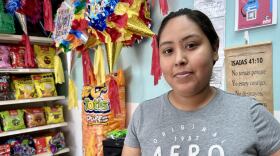Oklahoma ranked 46th for the third consecutive year in overall child well-being, according to a new 50-state report.
The annual KIDS COUNT Data Book is published by the private philanthropy Annie E. Casey Foundation, which makes grants to address challenges among children and young people. The report addresses 16 indicators across the categories of economic well-being, education, health and family and community.
It compares figures from 2019 to 2023, analyzing well-being in a post-pandemic America. Overall, Oklahoma surpassed only Nevada, Mississippi, Louisiana and New Mexico, placing 40th in economic well-being and family and community, 43rd in health and 48th in education.
"Oklahoma's elected officials like to say that our children's futures are a top priority, but the new KIDS COUNT report shows a stark disconnect between their words and their actions," said Shiloh Kantz, the executive director of the Oklahoma Policy Institute, in a press release.
The institute is a member of the Casey Foundation's KIDS COUNT network.
Oklahoma's education rankings went down across the board, with more fourth graders not proficient in reading, eighth graders not proficient in math and high school students not graduating on time. Eighth-grade math competencies experienced the steepest decline, from 74% not proficient in 2019 to 83% in 2024.
The state ranked among the top half of states on certain measures, including 23rd in its percentage of children in single-parent families and 25th in the percentage of low-birthweight babies.
Oklahoma saw improvements in teen births and the percentage of children without health insurance. But it also saw more child and teen deaths, with 40 per 100,000 as of 2023.
The report noted additional declines in economic well-being. In 2023, 21% of Oklahoma children were in poverty, compared to 20% in 2019. The number of children living in households with a high housing cost burden also increased from 25% to 27%.
Data points that remained the same include children whose parents lacked secure employment and teens who weren't in school and working. Both were above the national average.
Carly Putnam, the Oklahoma Policy Institute policy director, said in a statement something that stands out to her is that, despite Oklahoma's lower rankings, the state saw improvements in some indicators.
"And yet, we are still 46th," Putnam said, "which indicates that Oklahoma parents are doing what they're supposed to be doing, and it's not enough. So their individual contributions aren't enough when their wages are not enough or when there's not a significant safety net to help provide support for working families."
The Oklahoma Policy Institute encouraged lawmakers in its release to unite across party lines and use the report's findings to respond with initiatives that invest in young people.
"By staying grounded in data and driven by what children and families say they need, we can help ensure that all young people have the chance to thrive and contribute meaningfully as adults, helping to grow our future workforce, reduce long-term social and economic costs and build a stronger society for everyone," said Lisa Lawson, president and CEO of the Casey Foundation, in a release.
StateImpact Oklahoma is a partnership of Oklahoma's public radio stations which relies on contributions from readers and listeners to fulfill its mission of public service to Oklahoma and beyond. Donate online.
Copyright 2025 KGOU







